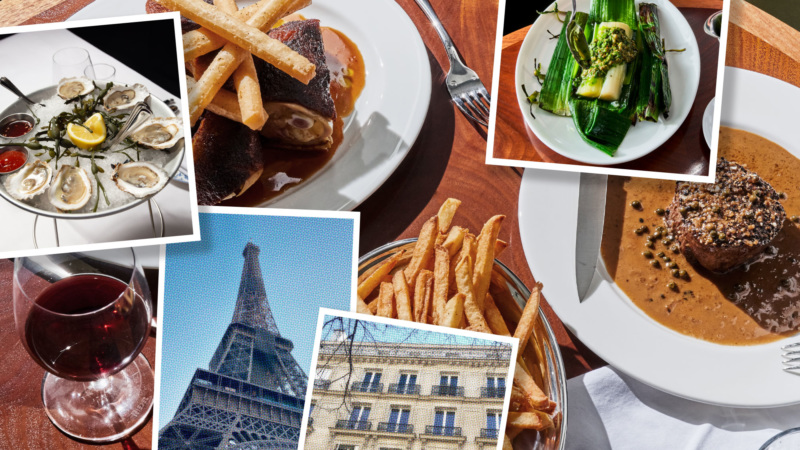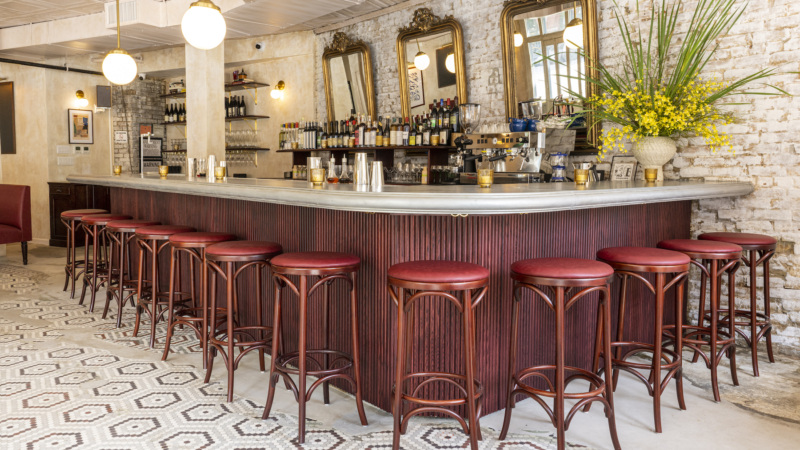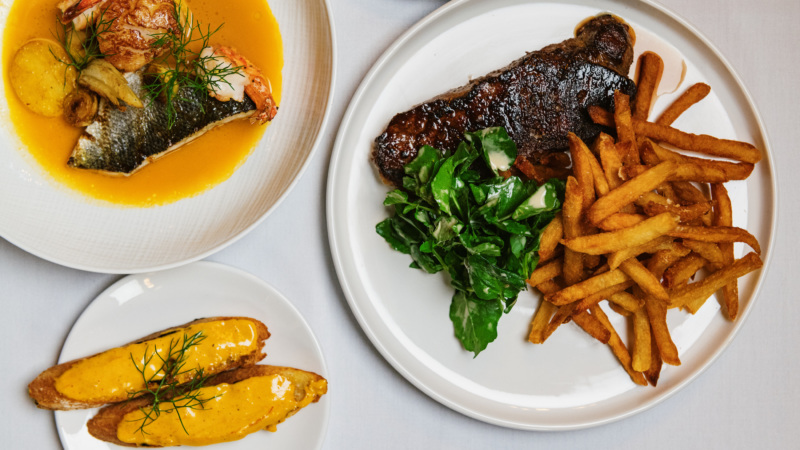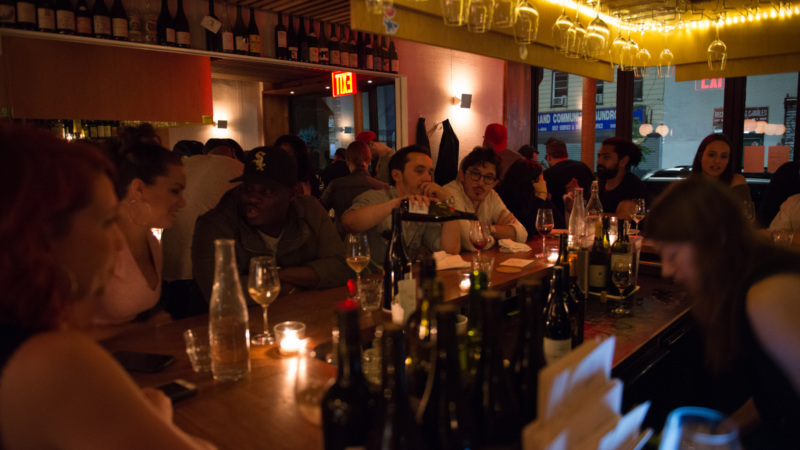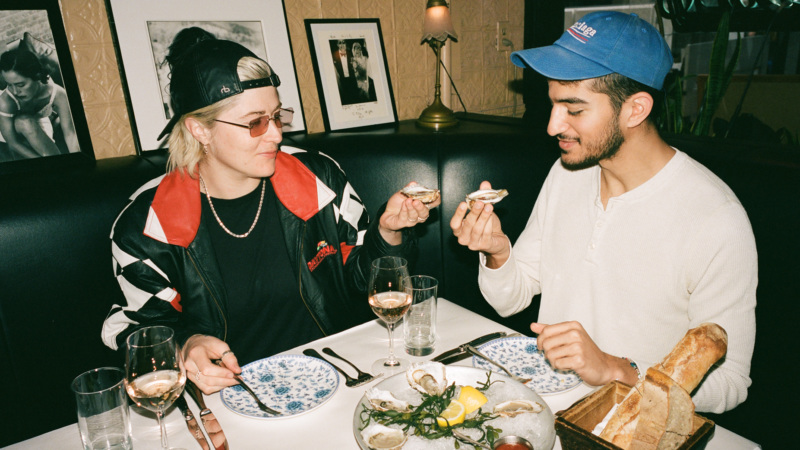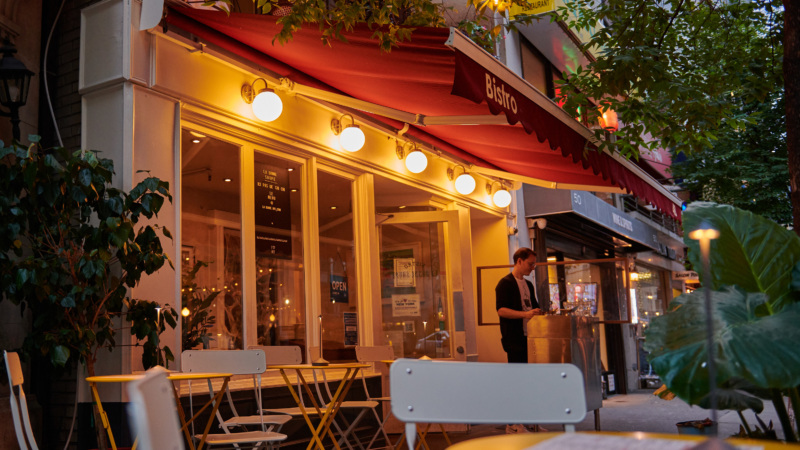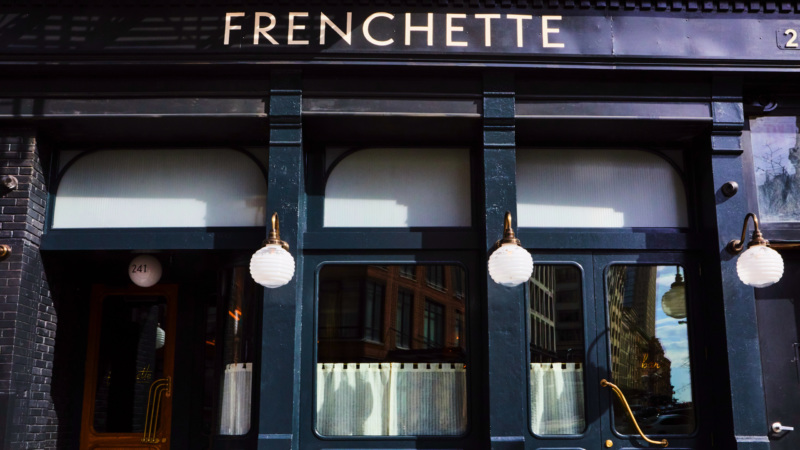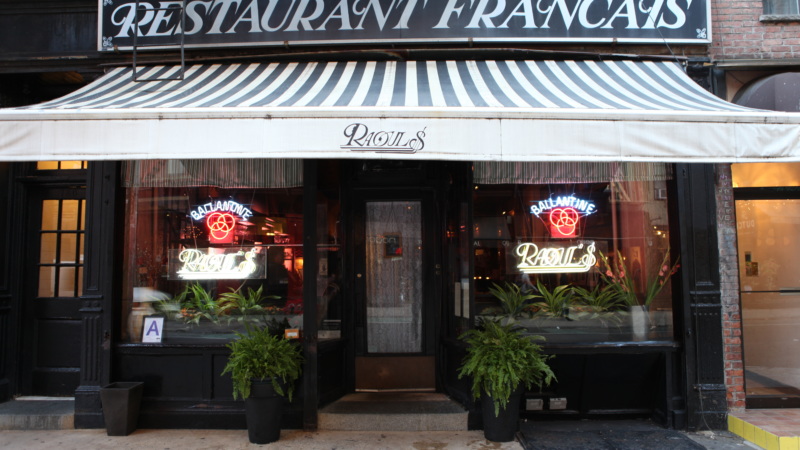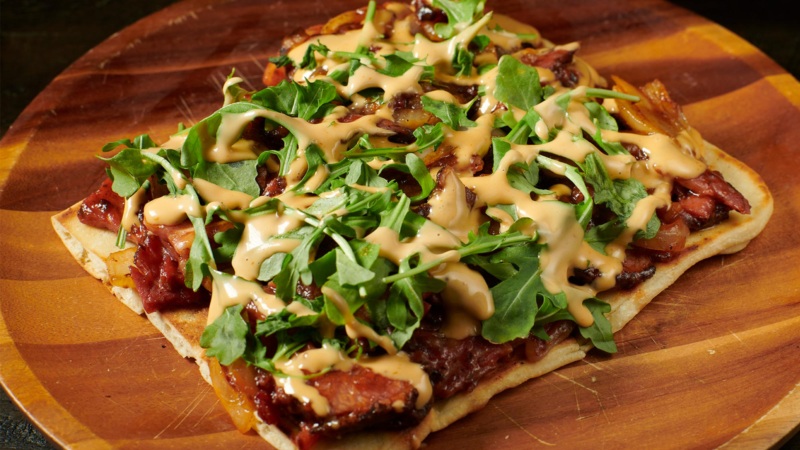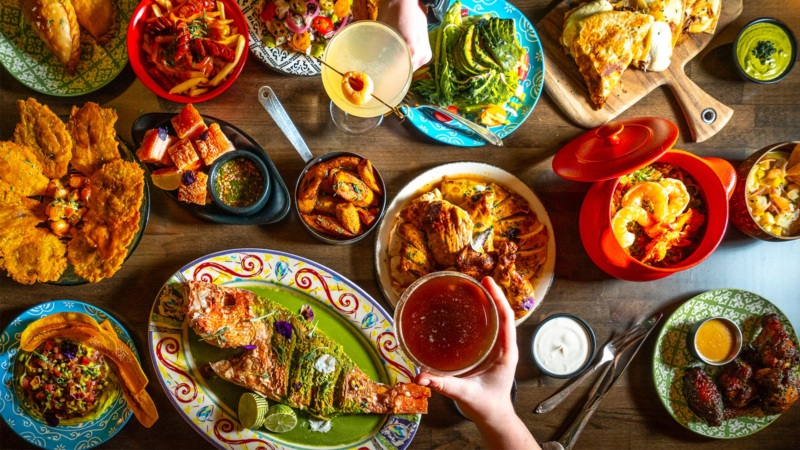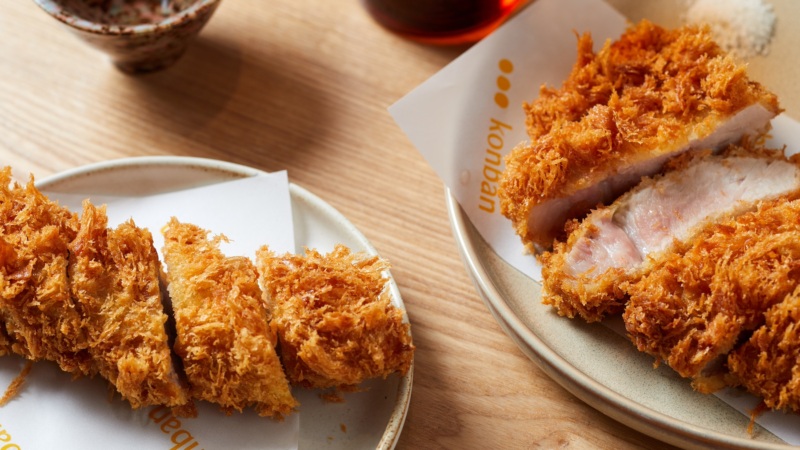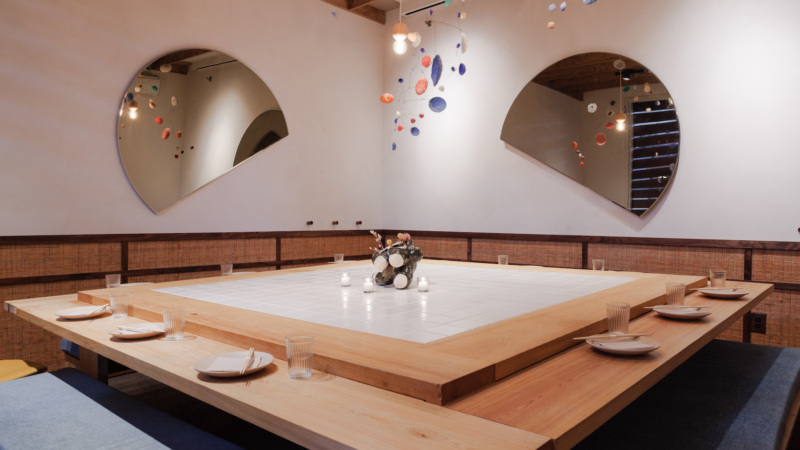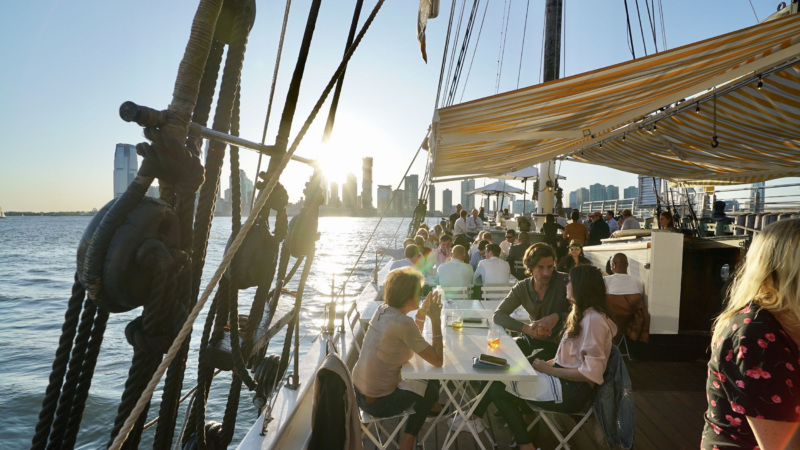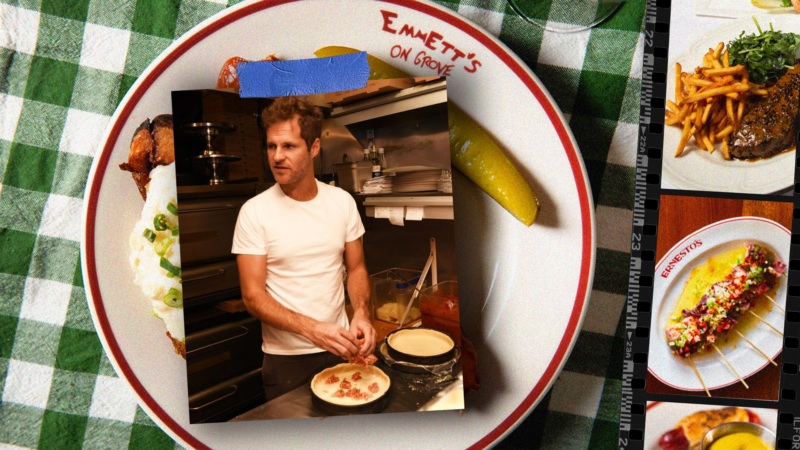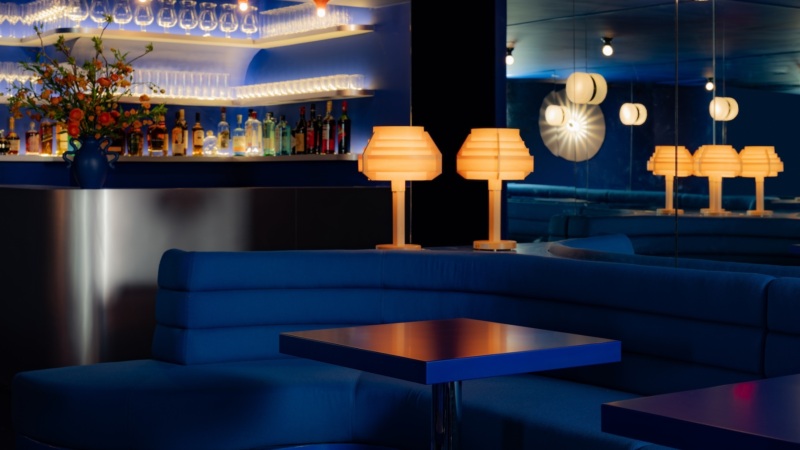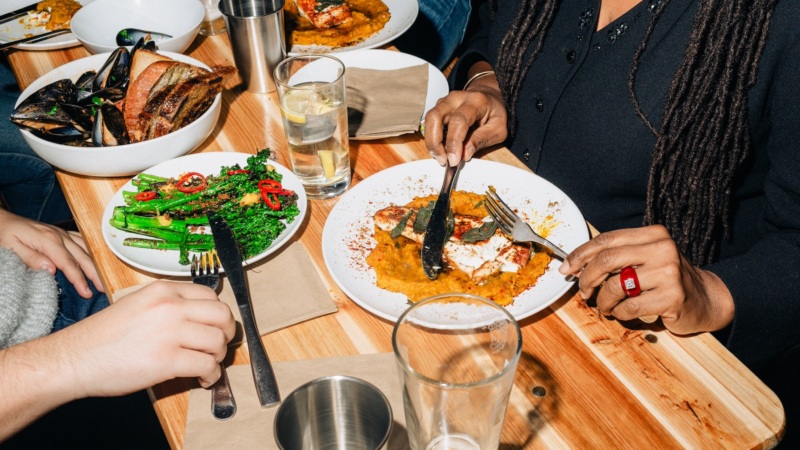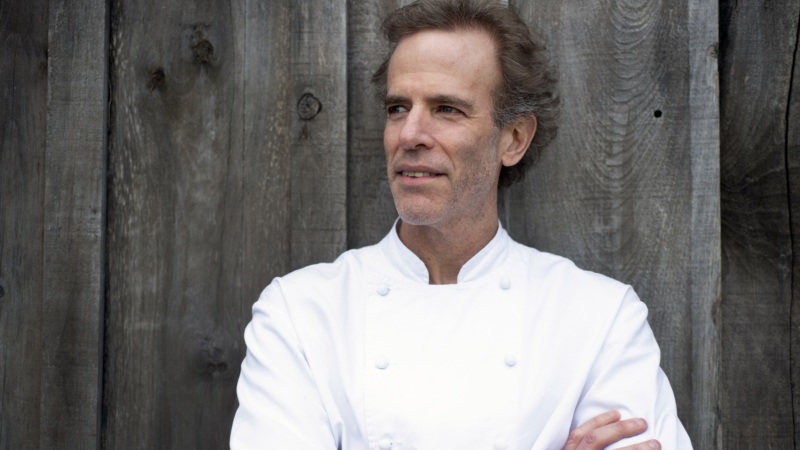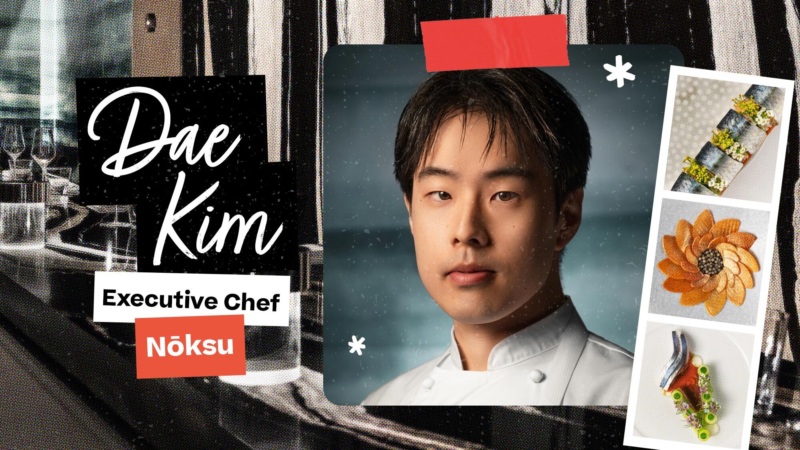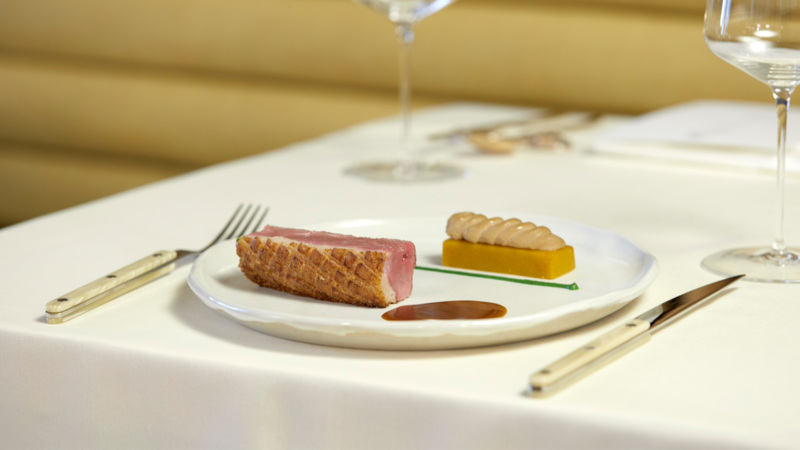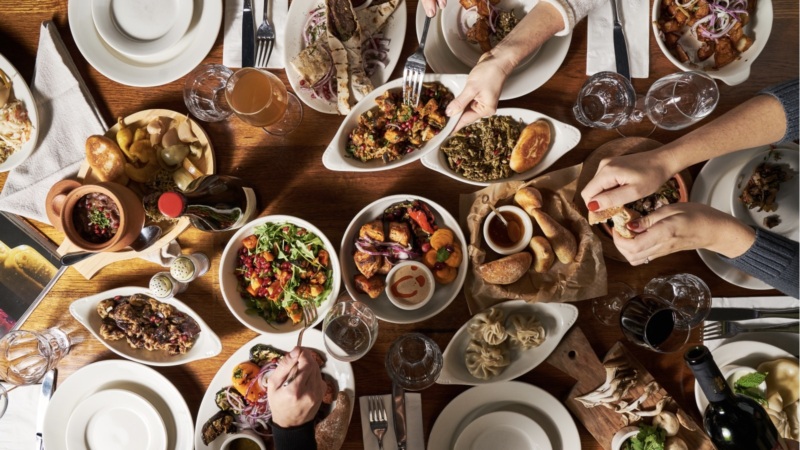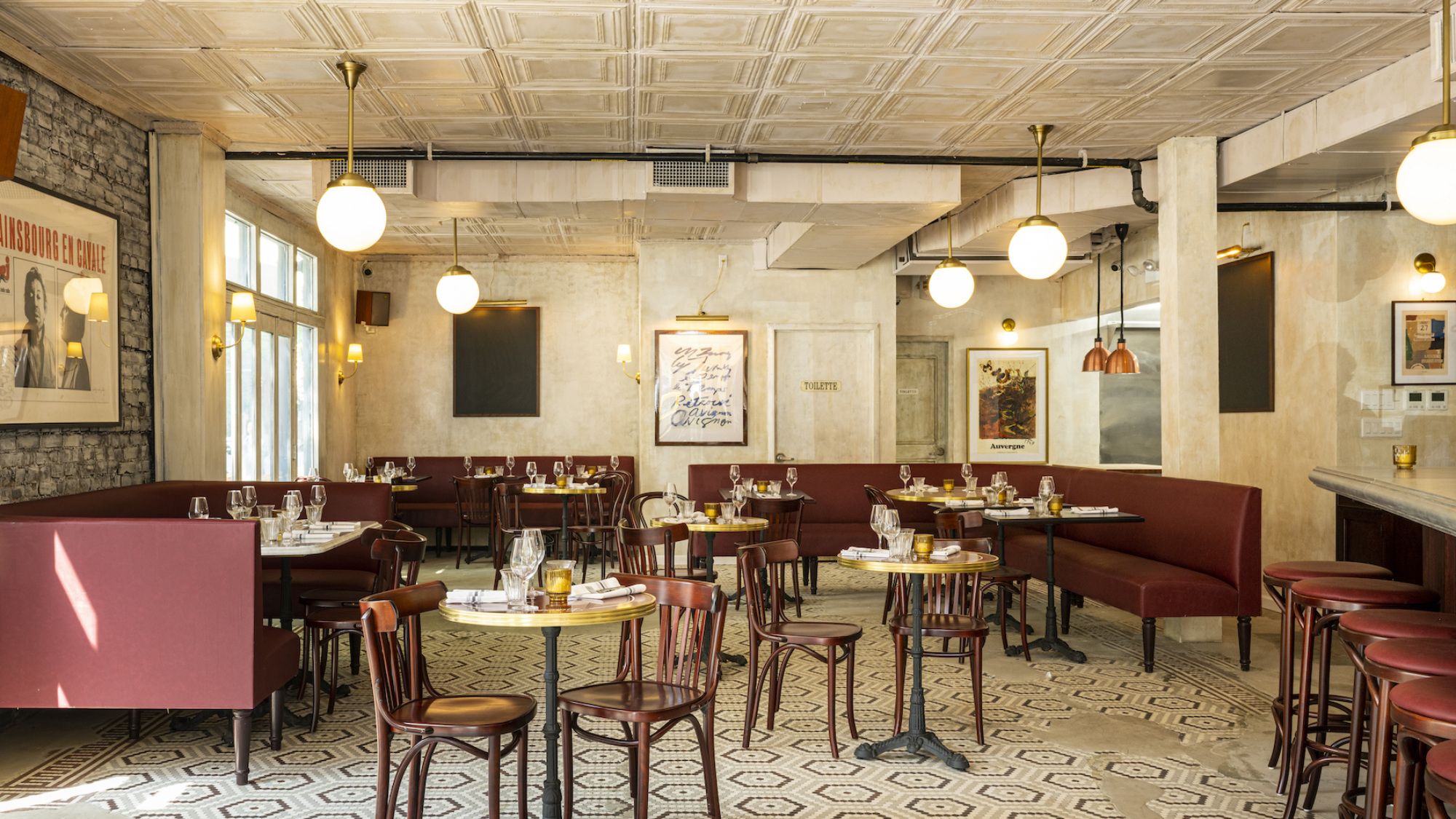
The One Who Keeps the Book New York
How to Get Into Libertine
Despite being open for barely more than a month, Libertine has already made a name for itself as an essential addition to the city’s French dining scene. Fiercely authentic — from the enameled tabletops to the wine list — and with a Notify list that hits 1,000 regularly, the corner restaurant has quickly become one of the city’s hottest reservations to snag. That’s where we come in.
Owner Cody Pruitt is no stranger to hospitality or the West Village, for that matter. A 10-year-plus industry veteran who still runs Anfora in the same neighborhood, Pruitt, along with his partners, chef Max Mackinnon and director of hospitality Isabella Pisacane, put their best food (and wine) forward with Libertine, taking inspiration from Pruitt’s childhood summers spent in France and their shared deep, personal love of natural wine and well-sourced food.
In this edition of “The One Who Keeps The Book,” Pruitt shares how to get a seat at the beloved bar and what to order when you do (hint: Don’t skip the salad).
Note: This interview has been condensed and lightly edited.
French Restaurants in New York

Lure Fishbar Chef Preston Clark’s Favorite Moules Frites, Steak Tartare, and French Onion Soup in New York
Resy: You’ve only been open for about a month. How quickly do your reservations fill up?
Pruitt: I mean, we’re very lucky. And I didn’t really expect it. But the vast majority of reservations are booked up within the first hours of each day.
How long is your Notify list?
Again, I’m a little surprised and very, very grateful that our Notify list is as big as it is. At times, the Notify list can get up to about 1,000 people. More than that on weekends. Sometimes it’ll be cut down to 800. It’s always pretty, pretty high, which is pretty awesome.
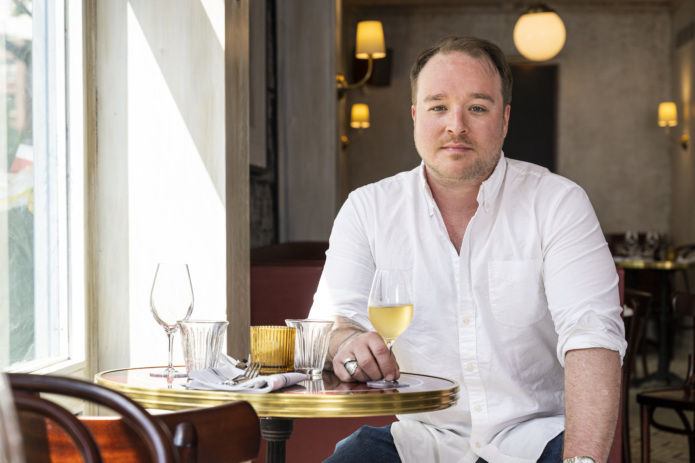
Do you hold any table seats for walk-ins, or just the bar?
Right now, it’s pretty much just the bar for walk-ins. We do usually have a handful of tables that we prefer to hold onto for our neighbors or for our brand-new regulars, or for friends of the house. But, because we’re a small restaurant, we need to make sure that we’re making money from every seat that we have. The best way for us to do that is to book up the majority of the dining room, if not all of it. Because we are a neighborhood bistro, in a true sense of the definition of a bistro, having the bar be first come, first served is absolutely essential to me. One day when we’re operating at an even greater volume, and once the kitchen can handle an even greater volume, I’d love to be able to set aside a couple of tables for walk-ins, given the demand that we know we have.
How many seats do you have?
Right now, we have 46 seats spread throughout 18 tables, and 12 seats at the bar. I work with a company in France that makes these amazing enamel tabletops that we use at Libertine, so I have been in touch with them now that I realized we could probably fit a couple more tables. So, we do have those on order, but those won’t be here probably until mid-August or September. We’re rolling with those numbers in the meantime.
What You Need to Know
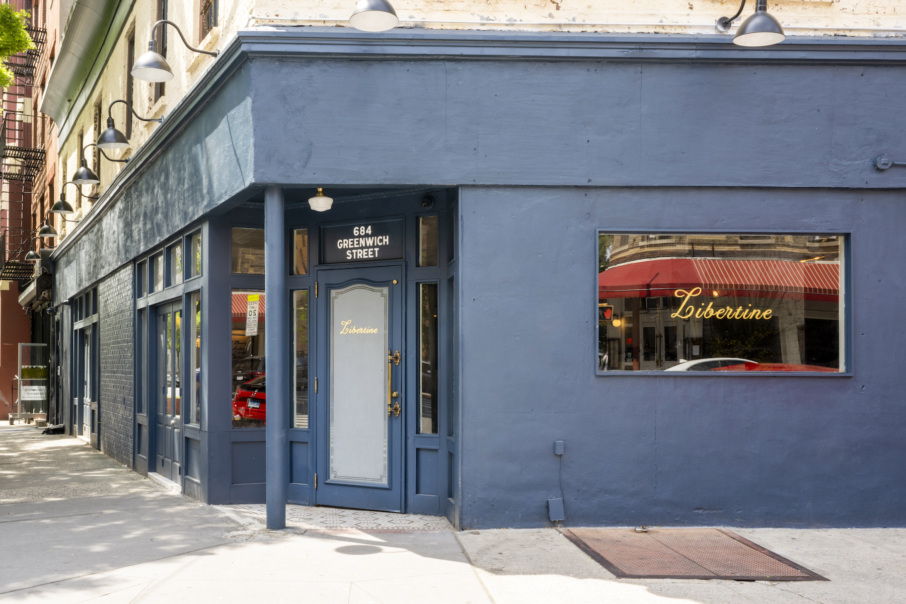
Plan Ahead: Reservations drop 30 days out at 7 a.m.
Walk On In: Get there right at 5 p.m. to score a seat at the full-service bar.
The Layout: The bar has 12 seats, and the dining room has 18 tables with 46 seats total. Hot tip: More tables are on order so there should be more seating in the near future.
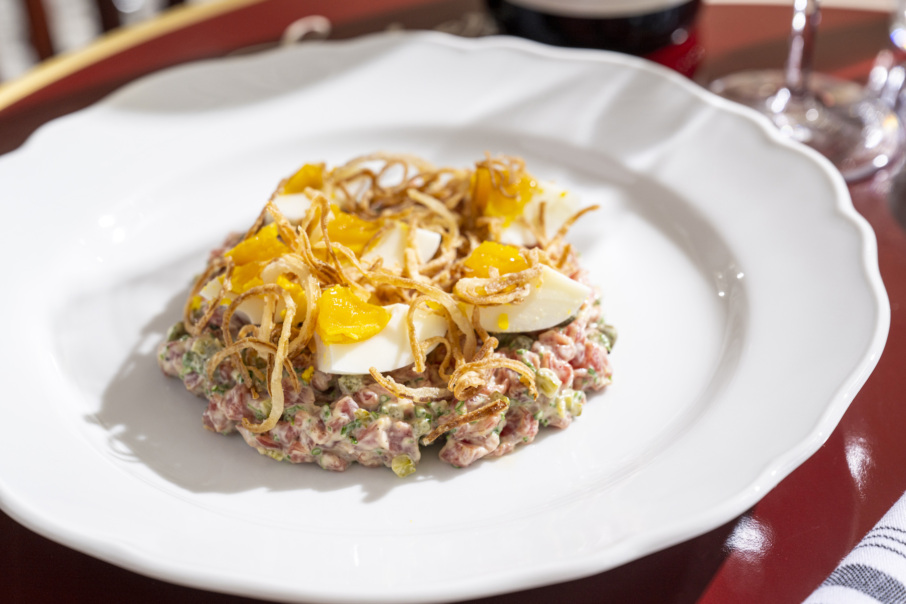
Pro Tip: Arriving right at opening or after the rush at 10 p.m. is your best chance at scoring a bar-seat on the day of.
Must-Order Dishes: Oeuf mayonnaise; salade maison; chicken liver mousse; saucisse purée.
Prime Time: 6 to 9:30 p.m.
What’s the best seat in the house, in your opinion? Where would you sit if you got to choose?
My girlfriend [partner and director of hospitality Isabella Pisacane] and I are bar diners regardless of where we are, just by virtue of the fact that we’d like to sit next to each other. But luckily, because we know that we like to sit next to each other, we’ve done the majority of our tables in circles instead of squares. So, there are numerous tables that we’d be comfortable sitting at. There are a couple of larger round tables that are for two or three or four people up front by the bar, as well as a very large round table, in a nook in one of our banquettes that’s directly next to the kitchen. We do have a semi-open kitchen, so I like being able to see everyone who’s coming in, people watch as best as we can, but also feel that we’re very much in the kitchen; that’s a huge part of a bistro experience.
What is your busiest time?
This is with the caveat that the West Village tends to be slower during the summer, but luckily for us, it’s not really the case yet. Our busiest time in terms of dining would be right around 7 p.m. At the bar, we’re lucky enough to have usually a small line or group of people wait outside right before we open at 5 p.m., so it tends to fill up with neighbors or regulars by 5:01 p.m. Then, it’s pretty much a revolving door at the bar for the course of the night. The dining room will be fully seated by no later than 6 p.m., but it’s really at its peak in terms of cranking out food and wine by 6:30 or 7 p.m.
Wow. Given all of that, what’s the absolute best advice you can give to someone who wants to get into Libertine?
Well, in terms of the bar, like I said, it’s a pretty quick revolving door. People do have full dinners at the bar quite often, and their seating times are less. So, if you come in and you’re comfortable with the bar, you’ll want to eat at the bar. I built the bar to be a dine-in bar so I would say come on the earlier side. Come before 6 or 6:30 p.m., or on the later side, as late as 10:30 p.m.
For tables, I strongly recommend making a reservation and getting on that Notify list. We do have flexibility sometimes to squeeze people in, but our busiest night is Friday. We tend to get more industry folks and neighbors earlier in the week. We’re only open Tuesday through Saturday right now, but we will be expanding to seven days in the next month or so.
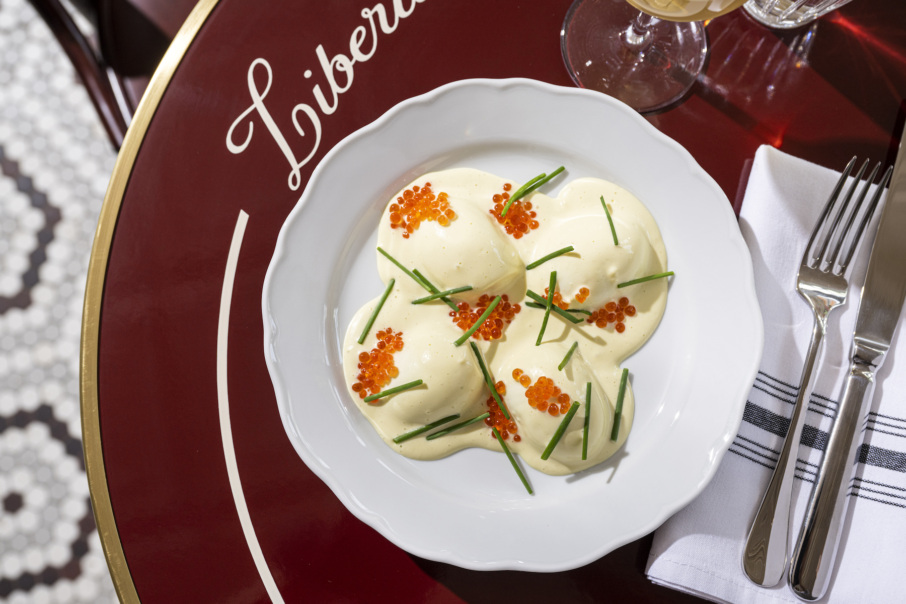
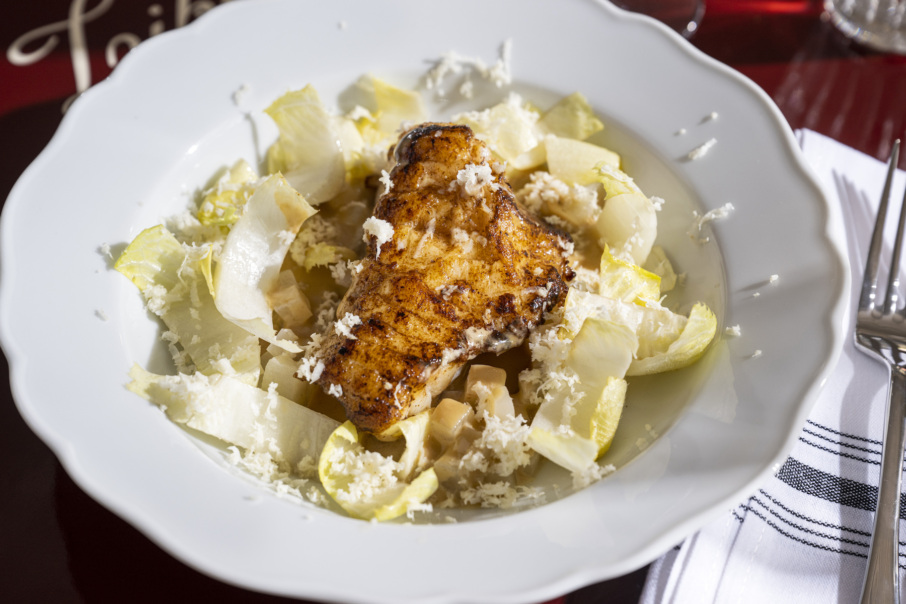
I know this can be a difficult question to answer, especially given that the menu could change or might change in the future, but can you give us an example of your perfect order? Start to finish, from drink to dessert?
I would have to start off with our bread and butter. It’s an amazing sourdough baguette and Normandy butter, which is more cheese than butter. I would definitely get an add-on of the chicken liver mousse; [chef Max Mackinnon’s] is the best, smoothest, least iron-y I’ve ever tasted.
Then I would move into our salad, which I think is criminally underrated. On its surface it’s a tall green salad, but we use savagnin vinaigrette, which is made by one of our natural winemakers. It adds a whole new dimension and umami flavor to the salad. Then, I’d do the beef tartare, which we serve with a jammy egg in a kind of deconstructed gribiche presentation. If I was with other people I would definitely share the lobster chou farçi, which is a chilled dish instead of the typical hot dish. Usually, chou farçi is stuffed cabbage with ground pork or brown sauce, and it’s absolutely delicious, but it’s not a summer dish or a dish I want to eat unless it’s snowing outside. But we serve it chilled. For the main course I would probably say the saucisse purée or the duck. I am a meat eater and I love our monkfish.
I’d want to start off with Champagne beforehand, then chenin blanc with the tartare. I want a bottle of Beaujolais or pinot noir that pairs perfectly with the saucisse purée.
Let’s hear more about those wines. It’s an entirely French list, right?
Yeah, absolutely. I spearhead the wine program and we always believed in a 100% dogmatically natural wine program. And for me, as a French restaurant, I find it antithetical or downright wrong to be serving Spanish wine or American wine. As delicious as those can be, it just doesn’t make a lot of sense. For us, 100% French, 100% natural. Natural is the wine that I’ve been working with for a long time. It’s the wine that we serve at Anfora, it’s the wine that I find most exciting and most dynamic and truest to supporting and highlighting farmers and growers in a real physical way. We can tell their story and then someone can drink the handiwork of these real, honest, hardworking, talented artisans. We’re mostly working with producers that I or Max [Mackinnon] have worked with extensively, but also with importers that we really trust.
Doing this 250-or-so bottle list felt important because there are not many, if any, spots in the West Village that I can go to and have the wine that I love.
There’s no place in the West Village that serves this kind of wine with that kind of depth and breadth along with this honest, lesser-known food prepared much more conscientiously with better ingredients, [especially] at a restaurant with our kind of casual environment.
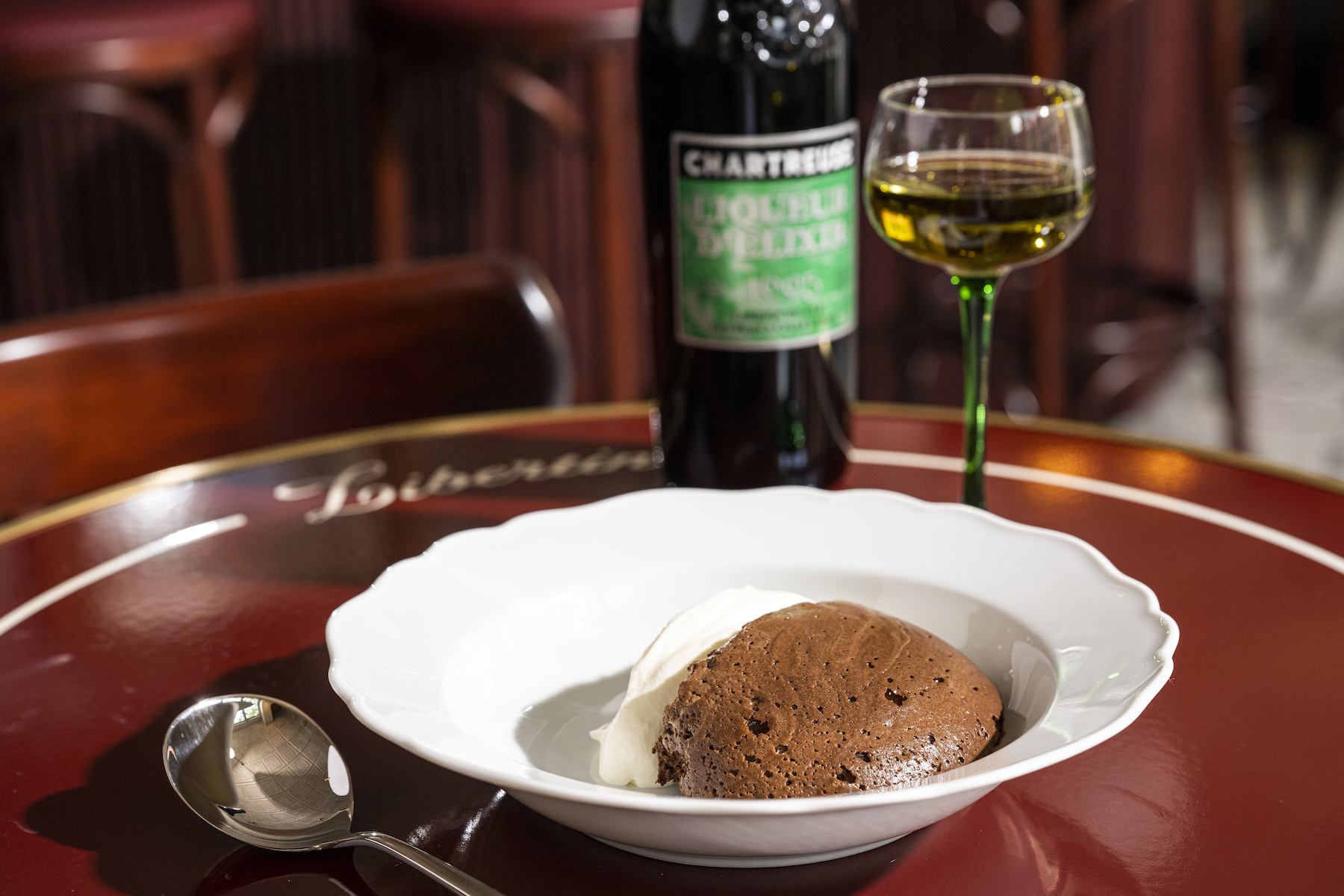
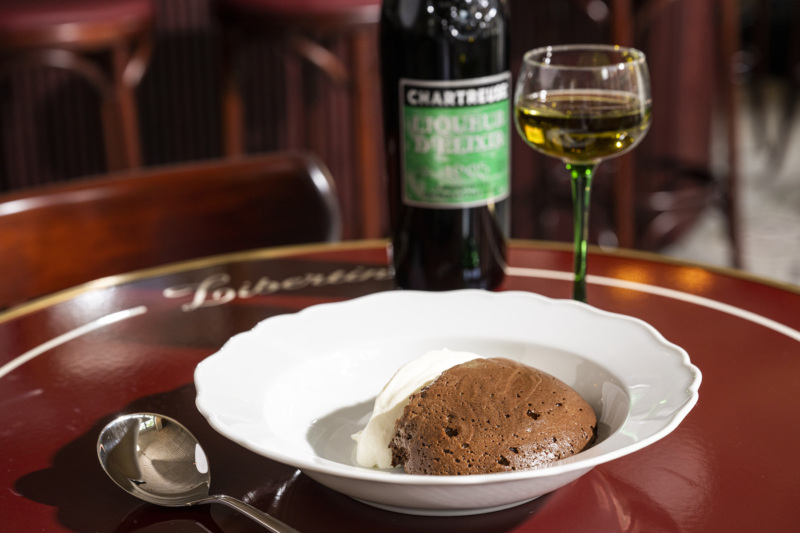
Tell me about the drive for authenticity within the restaurant. You mentioned the tables, and you told us before that a lot of dishes are designed to be very authentic. Why is that so important to you?
I spent most summers growing up in Paris, or Normandy. Even as a kid coming back from France, after being exposed to food over there and the bistros there, when we would go to a French restaurant here, I would look around and think “this isn’t French.” What is “le burger?” Why can’t I get oeuf mayonnaise? Why can’t I get saucisse purée?
I’m passionate about regional French cuisine. I felt like there was a need to celebrate and highlight these forgotten and lesser-known preparations. In Paris, or in parts of rural France, they’re still everywhere, they’re celebrated, and their associations determine the best oeuf mayonnaise every year. There are awards for best saucisse purée.
All these other quote, “French restaurants”, they put up a fake absinthe poster from, like, 100 years ago, and then they serve steak frites, and some escargot in cans, and they’re French.
For me, French cuisine, while it is heavier than some other cuisines, it doesn’t have to be heavy. The finesse and the seasonality behind French cuisine, I think, has really been lost in America, where a French restaurant will always have X, Y, and Z dishes instead of choosing seasonality.
Are the chalkboard menus another aspect of that authenticity you mention?
Absolutely. I always loved chalkboard menus. A chalkboard menu is an amazing way to engage your audience, engage the diners, in a different way. Whether they stand up and walk across the room to get a closer look at the chalkboard, or you take the chalkboard over to them to put it behind the table, you can see there are those different kinds of engagement, that’s just beyond handing someone a piece of paper and saying “choose.”
Having something on a chalkboard, it’s implied that it isn’t permanent and that it’s more dynamic. That’s really important. Even though, right now, we’re still working with pretty much the menu we opened with, we do intend on changing and adding and editing dishes. I like to be flexible.
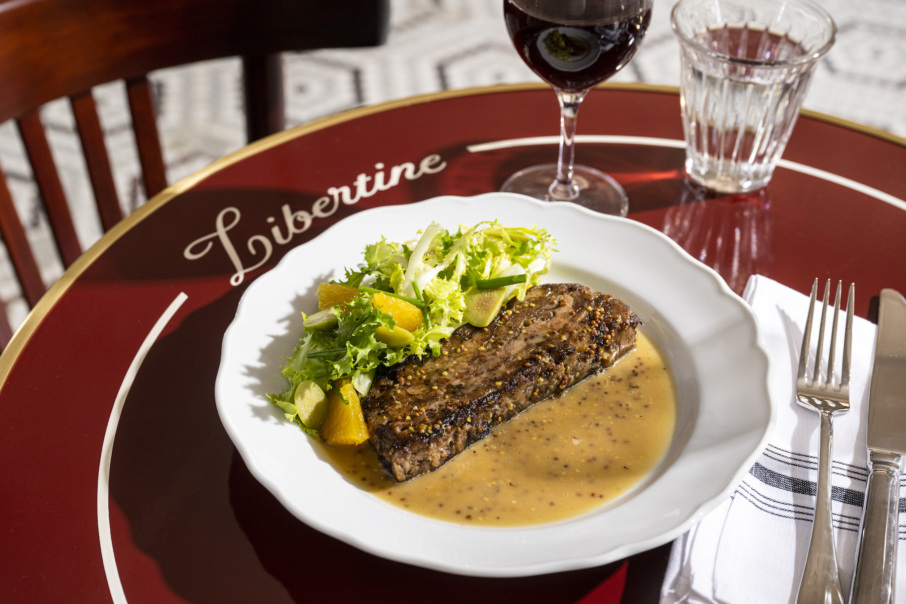
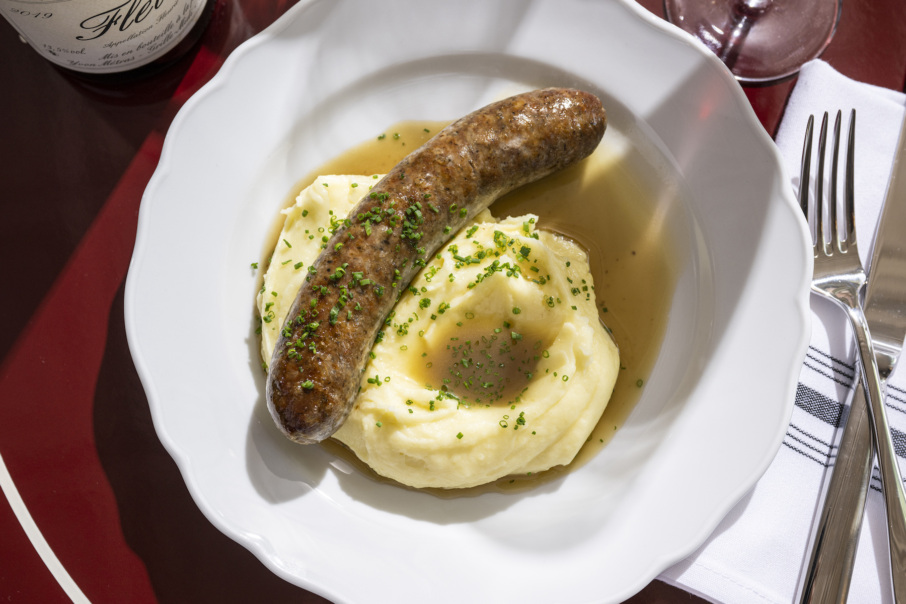
How did Libertine’s early pop-ups help shape the restaurant?
I signed the lease in August 2021. It was a fairly derelict but operational restaurant before I took it over, and we had projected six or eight months of renovations before we could be open. Instead, it took us from then until the end of May of this year — nearly two years.
I brought my chef [Max Mackinnon] on board towards the end of last year, and he and I spent a lot of time workshopping dishes in each other’s apartments as well as at the wine bar that I run, Anfora. But we got antsy creatively. We both had some experience doing pop-ups with other establishments or concepts in the past 10 years, and he and I were both used to working in other people’s kitchens and working in other people’s restaurants.
We were 20-plus year hospitality people, so luckily, we were very, very close with several operators whom we really respected, and whose views and principles aligned with ours.
I think it was at my chef and his wife’s New Year’s Eve party where we decided to do a bunch of pop-ups. Actually, several of the operators that we did partnerships with were there that night.
We did one in January at LoLo wine in Austin, Texas; that was amazing. We sold out of most of the food in under 45 minutes, despite us over-purchasing, we thought. We did one at Lord’s where the reservations, or tickets, sold out in about 45 minutes again. Then, we did one at Ops in Bushwick whose owner and chef, Mike [Fadem], is also a very good friend of ours. He was also at that initial party. We did one at Gem Wine, and our last one was a homecoming at Anfora.
It really helped us. We had a very good idea early on about how [the restaurant] would work, that the menu was going to be on chalkboards instead of printed, and that we would change it fairly regularly and with the seasons, which is true to the bistro archetype. We were able to workshop sauces — such a cornerstone of French cuisine — and presentation and platings, while also embracing the setting that we were in for each of the pop-ups.
For example, for Ops we turned our lamb dish into a pizza using their amazing sourdough. At Lord’s, which is closer to full-service, we did more of a true-to-concept trial. At LoLo, it’s very much a bar and a hangout, so we converted our chicken dish into a sandwich, and we converted our steak tartare into a sandwich, which we also did at Gem Wine.
I feel like it really benefited the final product. We really understand the limits of a dish; we understand what is essential to a dish if we have to pare it down. It ended up just being this amazing workshopping process for us, having active real guests and friends in the room. Now that we have a kitchen, dining, and bar, we’re really able to know what works best and what people respond to the most. We’re playing the hits right now.
For now, Libertine is open Tuesday to Sunday from 5 p.m. until midnight.
Ellie Plass is a freelance writer based in Brooklyn. Follow her on Instagram and Twitter. Follow Resy, too.


